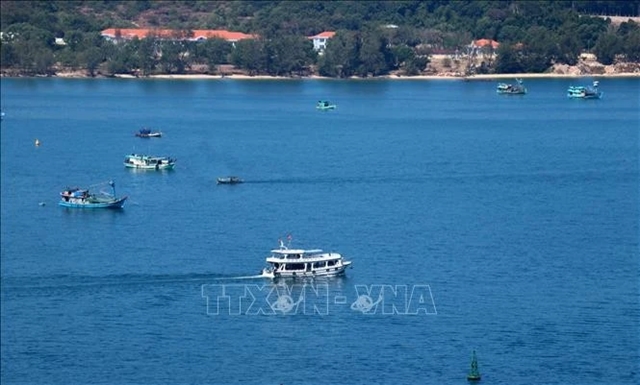Kiên Giang, a coastal province located in the southwesternmost of Việt Nam, boasts over 200 kilometres of coastline and more than 143 islands with picturesque beaches attracting millions of tourists annually.

Yachts serving tourists exploring Phú Quốc's island waters, Kiên Giang province. VNA/VNS Photo
KIÊN GIANG — Kiên Giang, a coastal province in the southwesternmost of Việt Nam, boasts over 200 kilometres of coastline and more than 143 islands with picturesque beaches attracting millions of tourists annually.
The Hải Tặc (pirate) archipelago, situated in Tiên Hải Commune, Hà Tiên City, consists of 18 islands, spanning over 250 hectares. Since being officially recognised as a local tourism area in early 2018 by the provincial People's Committee, this cluster of islands has seen substantial investment and development to tap into its tourism potential, spurring economic and social growth.
Nguyễn Thị Mộng Quyền, Director of Hà Tiên city’s centre for investment, trade, and tourism promotion, highlighted that in recent years, Hải Tặc has become a hub for community-based eco-tourism, drawing approximately 400,000 visitors annually.
Hòn Sơn, a small island in Lại Sơn Commune, Kiên Hải District, covers an area of 11.5 square kilometres and lies 65 kilometres west of Rạch Giá City.
Vice Chairman of the Lại Sơn People’s Committee Trần Quốc Tiến said the island's tourism industry has flourished since 2018, drawing between 600,000 and 700,000 tourists each year, with a consistent growth rate of 10 - 15 per cent year-on-year.
Kiên Giang province has attracted 317 tourism-related investment projects worth over US$16.5 billion so far. In 2024 alone, it has welcomed more than 9.8 million visitors, earning more than VNĐ25 trillion ($982.9 million ) in tourism revenue. Island and archipelago tourism played a significant role in these impressive figures, according to the province's centre for investment, trade, and tourism promotion.
Looking ahead, the director of the centre Quảng Xuân Lụa announced plans to improve existing tourism products while developing three unique ones, namely karst and coastal ecosystem tours in Hà Tiên and Kiên Lương, observation of dugongs, dolphins, and sea turtles in Phú Quốc’s natural environment, and eco-tours in Phú Quốc's tropical rainforest. Other proposed initiatives include border-gate tours, archaeological exploration of the Óc Eo Civilisation, yachting, shopping, creative tourism, virtual reality experiences, and wilderness adventures in Hà Tiên and the Hải Tặc.
Lụa stressed that Kiên Giang will continue investing in infrastructure, mobilising resources for tourism development, and enhancing the communications and foreign language skills of local residents to empower them in community-based tourism.
Strengthening collaboration with other provinces and international partners, embracing digital transformation, and integrating into the global tourism network remain key priorities for the province, she said. — VNA/VNS